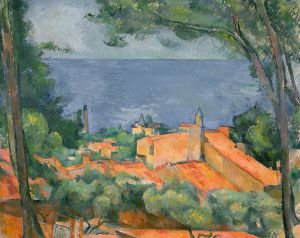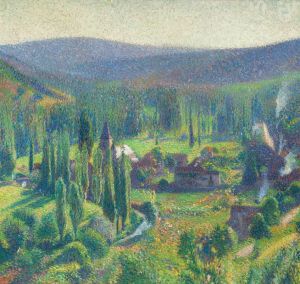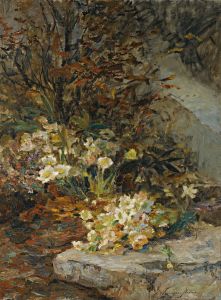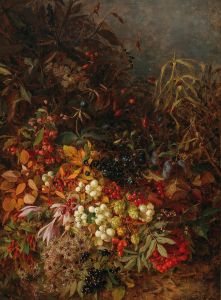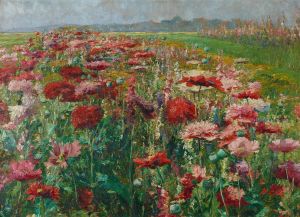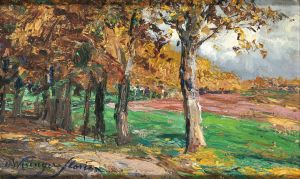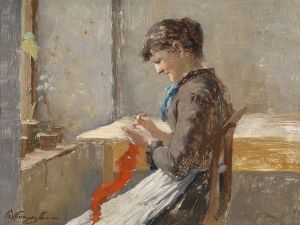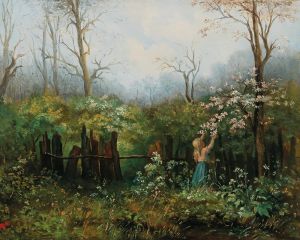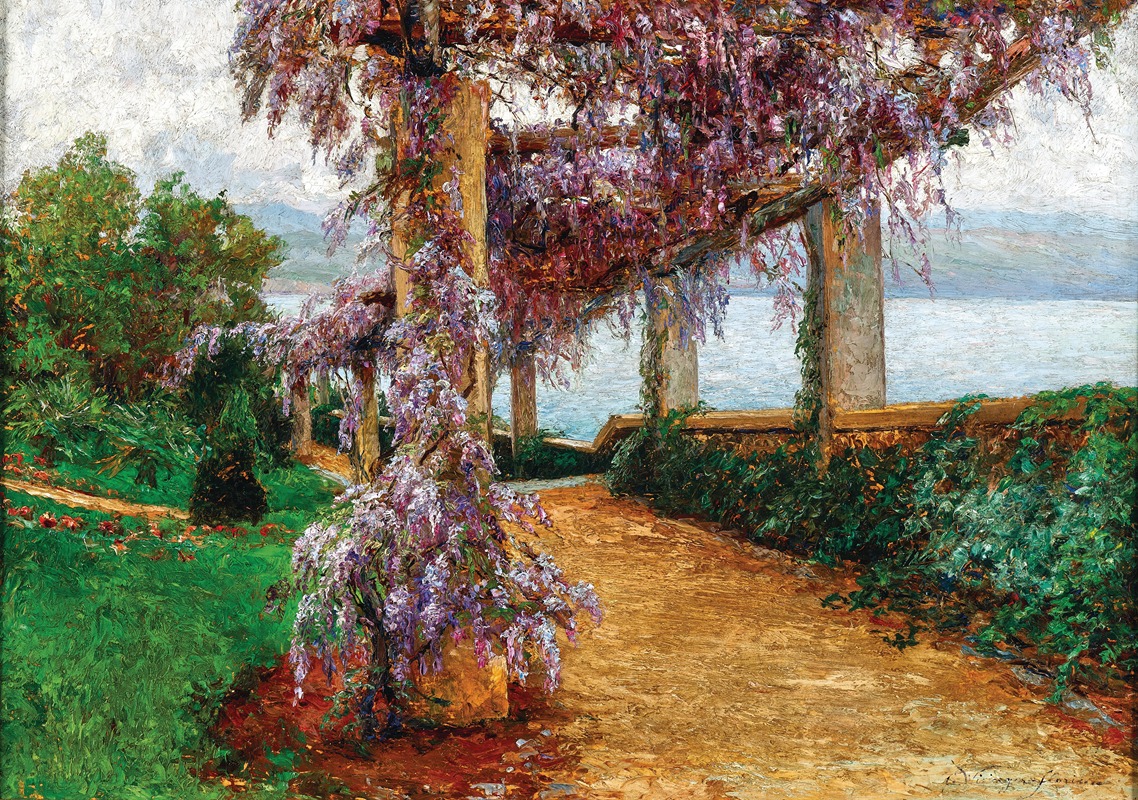
A Wisteria-Covered Pergola in the Garden of Villa Haas in Abbazia
A hand-painted replica of Olga Wisinger-Florian’s masterpiece A Wisteria-Covered Pergola in the Garden of Villa Haas in Abbazia, meticulously crafted by professional artists to capture the true essence of the original. Each piece is created with museum-quality canvas and rare mineral pigments, carefully painted by experienced artists with delicate brushstrokes and rich, layered colors to perfectly recreate the texture of the original artwork. Unlike machine-printed reproductions, this hand-painted version brings the painting to life, infused with the artist’s emotions and skill in every stroke. Whether for personal collection or home decoration, it instantly elevates the artistic atmosphere of any space.
Olga Wisinger-Florian was an Austrian painter known for her contributions to the Impressionist movement, particularly in the realm of landscape painting. Born in Vienna on November 1, 1844, she initially pursued a career in music before turning to painting in her thirties. Wisinger-Florian became one of the most prominent female artists of her time, gaining recognition for her vibrant depictions of gardens and nature.
"A Wisteria-Covered Pergola in the Garden of Villa Haas in Abbazia" is one of Wisinger-Florian's notable works, exemplifying her skill in capturing the interplay of light and color. The painting depicts a lush garden scene, dominated by a pergola draped with wisteria, a flowering plant known for its cascading clusters of purple blooms. The setting is the garden of Villa Haas, located in Abbazia, a popular resort town on the Adriatic coast, known today as Opatija in Croatia.
The painting reflects Wisinger-Florian's keen observation of nature and her ability to convey the serene beauty of garden landscapes. Her use of color is particularly striking, with the vibrant purples of the wisteria contrasting against the greens of the foliage and the soft hues of the surrounding garden. The composition is balanced, drawing the viewer's eye through the pergola and into the depths of the garden, inviting contemplation and appreciation of the natural world.
Wisinger-Florian was part of a broader movement of female artists in the late 19th and early 20th centuries who challenged the male-dominated art world. Her work was exhibited widely, and she received numerous accolades throughout her career. She was a member of the Vienna Secession, a group of artists who sought to break away from traditional academic art and explore new artistic expressions. Her association with this group further underscores her role in the development of modern art in Austria.
The choice of subject in "A Wisteria-Covered Pergola in the Garden of Villa Haas in Abbazia" aligns with Wisinger-Florian's broader oeuvre, which often focused on gardens, parks, and rural landscapes. These themes were popular among Impressionist painters, who sought to capture the fleeting effects of light and atmosphere. Wisinger-Florian's work is characterized by a delicate yet dynamic brushwork, which imbues her paintings with a sense of movement and life.
While specific details about the creation of this particular painting are limited, it is clear that Wisinger-Florian's work was influenced by her travels and her exposure to different landscapes and environments. The garden of Villa Haas would have provided a rich source of inspiration, with its Mediterranean flora and the unique quality of light found in coastal regions.
Olga Wisinger-Florian's contributions to art extend beyond her paintings. She was an advocate for women's rights and played an active role in various cultural and social organizations. Her legacy is reflected in the continued appreciation of her work, which remains an important part of the history of Impressionism and the broader narrative of women in art.
In summary, "A Wisteria-Covered Pergola in the Garden of Villa Haas in Abbazia" is a testament to Olga Wisinger-Florian's artistic vision and her ability to capture the beauty of nature. Through her work, she not only contributed to the Impressionist movement but also paved the way for future generations of female artists.








